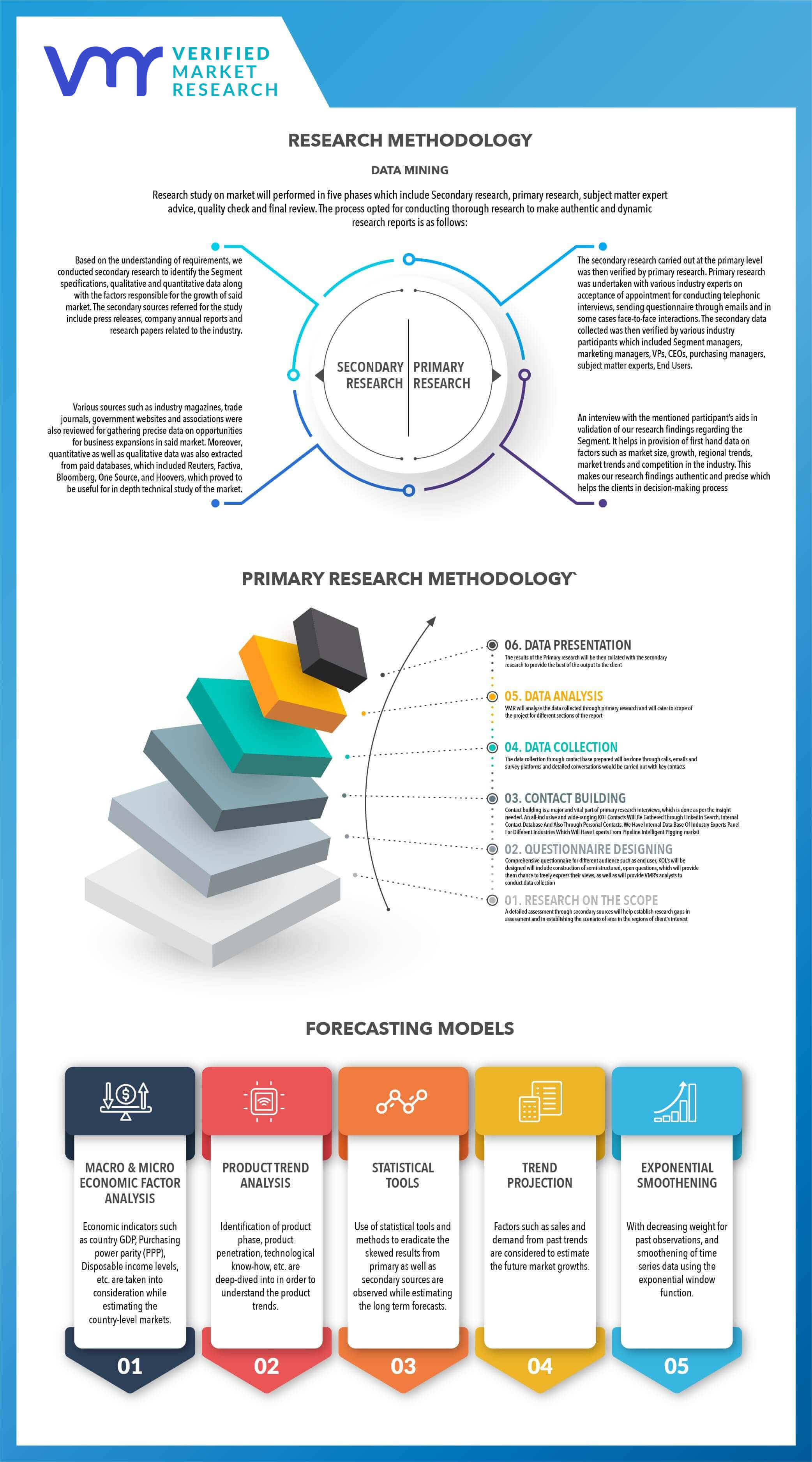
Global Plastic Shims Market Size By Material Type, By Thickness, By End-User Industry, By Geographic Scope And Forecast
Report ID: 456496 | Published Date: Oct 2024 | No. of Pages: 202 | Base Year for Estimate: 2023 | Format:




Plastic Shims Market size was valued at USD 96.3 Billion in 2023 and is projected to reach USD 128.3 Billion by 2031, growing at a CAGR of 3.8% during the forecast period 2024-2031.
The market drivers for the Plastic Shims Market can be influenced by various factors. These may include:
Several factors can act as restraints or challenges for the Plastic Shims Market. These may include:
The Global Plastic Shims Market is Segmented on the basis of Material Type, Thickness, End-User Industry, And Geography.

The plastic shims market can be segmented by material type, which plays a crucial role in determining the application and performance characteristics of the shims. Plastic shims are essential tools used across various industries for leveling, spacing, and securing components in construction, manufacturing, and automotive settings. The main market segment comprises different types of plastics used in the production of shims, with polypropylene (PP), polyethylene (PE), and polyvinyl chloride (PVC) being the primary materials. Each of these materials offers distinct advantages, making them suitable for specific applications. Polypropylene (PP), for instance, is known for its robustness, chemical resistance, and lightweight attributes, making it an ideal choice for various industrial applications. It can withstand higher temperatures and is often preferred for heavy-duty tasks.
On the other hand, polyethylene (PE) is renowned for its excellent flexibility, durability, and moisture resistance, making it suitable for applications where environmental exposure is a concern. It is lightweight, easy to handle, and is widely used in packaging and consumer goods, contributing to its demand in the shims market. Lastly, polyvinyl chloride (PVC) is recognized for its rigidity and strength, which makes it a popular material in construction and plumbing applications, where stability is paramount. The choice of material is critical, as it directly influences the shim’s performance and longevity in various settings. The diversification within this segment allows manufacturers to cater to a wider array of customer needs, facilitating innovative applications in the evolving market landscape.
The Plastic Shims Market can be classified into several segments, with one of the primary categorizations being by thickness. This classification is essential as it allows businesses and consumers to select the appropriate shim based on specific application requirements. Plastic shims are utilized in numerous industries for leveling, spacing, and adjusting alignment. They are favored because they resist corrosion, are lightweight, and offer various thickness options to fulfill specific tolerances. When categorized by thickness, the market is divided into three main sub-segments: thin shims, medium shims, and thick shims. Each sub-segment serves distinct applications, making it crucial for end-users to understand the implications of thickness on performance and functionality.
Thin shims are generally preferred for applications that require high precision and minimal adjustments, such as in electronics or delicate machinery, where space is constrained, and even slight variations can lead to significant operational issues. Medium shims strike a balance between strength and flexibility, often being used in general construction and automotive sectors for structural reinforcements. Thick shims, on the other hand, are designed for heavy-duty applications where significant adjustments and support are required, such as in construction projects involving large equipment and machinery installations. By segmenting the Plastic Shims Market based on thickness, stakeholders can better cater to the unique demands of various industries, ensuring that shims are selected and applied effectively to enhance stability, alignment, and overall performance in their respective applications.
The plastic shims market is a niche segment within the broader materials and manufacturing industry, and it primarily serves various end-user industries that rely on precise alignment, leveling, and spacing solutions. In this context, the market can be categorized into several key end-user segments, with construction, automotive, aerospace, and electronics representing the primary sub-segments. Each of these industries has distinct requirements for plastic shims, which are typically made from materials such as polycarbonate, nylon, or polyethylene due to their lightweight, durability, and resistance to environmental factors. Plastic shims are used in these sectors to ensure proper fit and function of components, making them an essential part of many applications ranging from flooring and cabinetry in construction to precision assembly in aerospace.
The construction sub-segment utilizes plastic shims for leveling and aligning structural components, including doors, windows, and cabinetry. In the automotive industry, these shims play a vital role in aligning engine components and suspensions, enhancing the overall efficiency and performance of vehicles. Aerospace applications benefit from the lightweight nature of plastic shims, ensuring safety and aerodynamics while maintaining strict dimensional controls in aircraft assembly. The electronics sub-segment employs plastic shims in devices and machinery for spacing and insulation, ensuring reliable performance. As industries increasingly shift towards lightweight and corrosion-resistant materials, the demand for plastic shims continues to rise. This growth is propelled by ongoing innovations and the evolving needs of these sectors, leading to increased opportunities for manufacturers and suppliers within the plastic shims market.
The plastic shims market is categorized primarily by geography, reflecting the diverse applications and regional demand for these essential tools. Each geographic region exhibits unique characteristics influencing the production and consumption of plastic shims. North America stands out as a significant market, driven by robust construction activities, increasing manufacturing requirements, and a growing trend towards sustainable building practices. The automotive and industrial sectors in this region leverage plastic shims for precise alignment, adjustment, and cushioning, ensuring operational efficiency and structural integrity. In Europe, the market is characterized by stringent regulatory standards and a strong push towards eco-friendly materials. European industries are increasingly integrating lightweight, durable plastics into their assembly processes, promoting the use of shims as versatile components in various applications such as machinery, construction, and automotive manufacturing.
In the Asia-Pacific region, a surge in industrialization and urbanization significantly boosts the demand for plastic shims. Countries like China and India are experiencing rapid growth in construction, automotive, and electronic manufacturing sectors, creating lucrative opportunities for plastic shim producers. The Middle East and Africa, while still emerging markets, demonstrate potential in construction and infrastructure development, necessitating specialized shim solutions for a variety of applications. Lastly, Latin America, with its developing economies, is witnessing increased investments in various industries that leverage plastic shims to enhance product durability and performance. This geographical segmentation addresses the diverse market drivers, allowing companies to tailor their strategies to cater to the specific needs and growth potential within each region, ultimately influencing the overall dynamics of the plastic shims market.
The major players in the Plastic Shims Market are:
| REPORT ATTRIBUTES | DETAILS |
|---|---|
| STUDY PERIOD | 2020-2031 |
| BASE YEAR | 2023 |
| FORECAST PERIOD | 2024-2031 |
| HISTORICAL PERIOD | 2020-2022 |
| UNIT | Value (USD Billion) |
| KEY COMPANIES PROFILED | PSA Company, Bfseals, TIMco, Precision Brand Products Inc., Broadfix, MAGNASPHERE Corp, Jiangyin Yonghao Machinery Co. Ltd., Hebei Yilaihui Technology Co. Ltd |
| SEGMENTS COVERED | By Material Type, By Thickness, By End-User Industry, And By Geography |
| CUSTOMIZATION SCOPE | Free report customization (equivalent to up to 4 analysts working days) with purchase. Addition or alteration to country, regional & segment scope. |

Qualitative and quantitative analysis of the market based on segmentation involving both economic as well as non-economic factors
Provision of market value (USD Billion) data for each segment and sub-segment
Indicates the region and segment that is expected to witness the fastest growth as well as to dominate the market
Analysis by geography highlighting the consumption of the product/service in the region as well as indicating the factors that are affecting the market within each region
Competitive landscape which incorporates the market ranking of the major players, along with new service/product launches, partnerships, business expansions, and acquisitions in the past five years of companies profiled
Extensive company profiles comprising of company overview, company insights, product benchmarking, and SWOT analysis for the major market players
The current as well as the future market outlook of the industry with respect to recent developments which involve growth opportunities and drivers as well as challenges and restraints of both emerging as well as developed regions
Includes in-depth analysis of the market of various perspectives through Porters five forces analysis
Provides insight into the market through Value Chain
Market dynamics scenario, along with growth opportunities of the market in the years to come
6-month post-sales analyst support
In case of any Queries or Customization Requirements please connect with our sales team, who will ensure that your requirements are met.
1. Introduction
Market Definition
Market Segmentation
Research Methodology
2. Executive Summary
Key Findings
Market Overview
Market Highlights
3. Market Overview
Market Size and Growth Potential
Market Trends
Market Drivers
Market Restraints
Market Opportunities
Porter's Five Forces Analysis
4. Plastic Shims Market, By Material Type
Polypropylene (PP)
Polyethylene (PE)
Polyvinyl Chloride (PVC)
5. Plastic Shims Market, By Thickness
Thin Shims
Medium Shims
Thick Shims
6. Plastic Shims Market, By End-User Industry
Construction
Automotive
Aerospace
Electronics
7. Regional Analysis
North America
United States
Canada
Mexico
Europe
United Kingdom
Germany
France
Italy
Asia-Pacific
China
Japan
India
Australia
Latin America
Brazil
Argentina
Chile
Middle East and Africa
South Africa
Saudi Arabia
UAE
8. Competitive Landscape
Key Players
Market Share Analysis
9. Company Profiles
PSA Company
Bfseals
TIMco
Precision Brand Products Inc.
Broadfix
DeFelsko Corporation
MAGNASPHERE Corp
Jiangyin Yonghao Machinery Co. Ltd.
Hebei Yilaihui Technology Co. Ltd.
10. Market Outlook and Opportunities
Emerging Technologies
Future Market Trends
Investment Opportunities
11. Appendix
List of Abbreviations
Sources and References

Verified Market Research uses the latest researching tools to offer accurate data insights. Our experts deliver the best research reports that have revenue generating recommendations. Analysts carry out extensive research using both top-down and bottom up methods. This helps in exploring the market from different dimensions.
This additionally supports the market researchers in segmenting different segments of the market for analysing them individually.
We appoint data triangulation strategies to explore different areas of the market. This way, we ensure that all our clients get reliable insights associated with the market. Different elements of research methodology appointed by our experts include:
Market is filled with data. All the data is collected in raw format that undergoes a strict filtering system to ensure that only the required data is left behind. The leftover data is properly validated and its authenticity (of source) is checked before using it further. We also collect and mix the data from our previous market research reports.
All the previous reports are stored in our large in-house data repository. Also, the experts gather reliable information from the paid databases.

For understanding the entire market landscape, we need to get details about the past and ongoing trends also. To achieve this, we collect data from different members of the market (distributors and suppliers) along with government websites.
Last piece of the market research puzzle is done by going through the data collected from questionnaires, journals and surveys. VMR analysts also give emphasis to different industry dynamics such as market drivers, restraints and monetary trends. As a result, the final set of collected data is a combination of different forms of raw statistics. All of this data is carved into usable information by putting it through authentication procedures and by using best in-class cross-validation techniques.
| Perspective | Primary Research | Secondary Research |
|---|---|---|
| Supplier side |
|
|
| Demand side |
|
|

Our analysts offer market evaluations and forecasts using the industry-first simulation models. They utilize the BI-enabled dashboard to deliver real-time market statistics. With the help of embedded analytics, the clients can get details associated with brand analysis. They can also use the online reporting software to understand the different key performance indicators.
All the research models are customized to the prerequisites shared by the global clients.
The collected data includes market dynamics, technology landscape, application development and pricing trends. All of this is fed to the research model which then churns out the relevant data for market study.
Our market research experts offer both short-term (econometric models) and long-term analysis (technology market model) of the market in the same report. This way, the clients can achieve all their goals along with jumping on the emerging opportunities. Technological advancements, new product launches and money flow of the market is compared in different cases to showcase their impacts over the forecasted period.
Analysts use correlation, regression and time series analysis to deliver reliable business insights. Our experienced team of professionals diffuse the technology landscape, regulatory frameworks, economic outlook and business principles to share the details of external factors on the market under investigation.
Different demographics are analyzed individually to give appropriate details about the market. After this, all the region-wise data is joined together to serve the clients with glo-cal perspective. We ensure that all the data is accurate and all the actionable recommendations can be achieved in record time. We work with our clients in every step of the work, from exploring the market to implementing business plans. We largely focus on the following parameters for forecasting about the market under lens:
We assign different weights to the above parameters. This way, we are empowered to quantify their impact on the markets momentum. Further, it helps us in delivering the evidence related to market growth rates.
The last step of the report making revolves around forecasting of the market. Exhaustive interviews of the industry experts and decision makers of the esteemed organizations are taken to validate the findings of our experts.
The assumptions that are made to obtain the statistics and data elements are cross-checked by interviewing managers over F2F discussions as well as over phone calls.

Different members of the markets value chain such as suppliers, distributors, vendors and end consumers are also approached to deliver an unbiased market picture. All the interviews are conducted across the globe. There is no language barrier due to our experienced and multi-lingual team of professionals. Interviews have the capability to offer critical insights about the market. Current business scenarios and future market expectations escalate the quality of our five-star rated market research reports. Our highly trained team use the primary research with Key Industry Participants (KIPs) for validating the market forecasts:
The aims of doing primary research are:
| Qualitative analysis | Quantitative analysis |
|---|---|
|
|
Download Sample Report